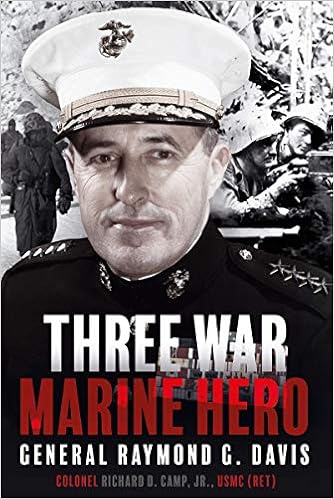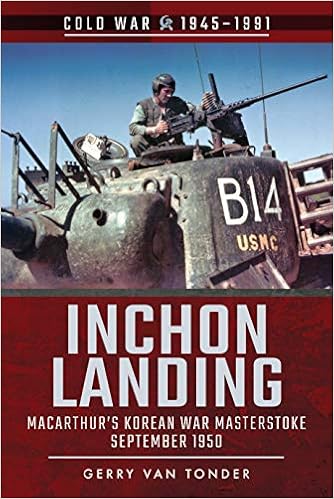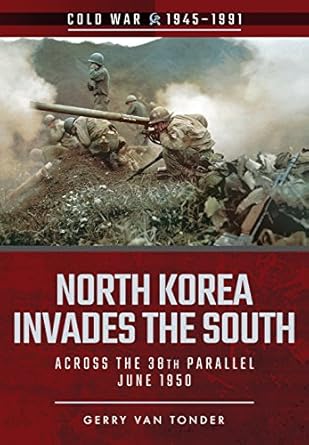Executive Leader Failures During the Korean War
By Jacob B. Dockery
The end of World War II led to a dramatic reduction of American military forces worldwide. While requirements to sustain soldiers in occupied countries existed, the offensive campaigns of World War II had ended, and America wanted its soldiers home. Post-World War II demobilization left the United States with a total of 590,000 soldiers, down from 1.9 million soldiers in 1946 (Longabaugh, 2014). Executive leaders continued to deliver poor strategic decisions in the Far East theater in hopes of preventing another conflict. False confidence in U.S. air superiority and nuclear deterrence led executive leaders to believe South Korea was safe from the North Korean invasion. As a result, force readiness deteriorated rapidly, and the South Korean Army and American forces with Task Force Smith were no match for the initial onslaught of North Korean and Chinese soldiers during the beginning of the Korean War. Historians depict the 24th Infantry Division as a failure during the Korean War, however, poor planning by executive and strategic leaders directly correlated to the experiences of American forces on the peninsula.
Post-World War II
After World War II's conclusion, nations began reorganizing and prioritizing reconstruction efforts, as well as domestic issues. Preparation and training on the Korean peninsula for American soldiers were significantly lacking prior to the invasion by the North Korean Army on June 25, 1950 (Hanson, 2010). American pride after World War II led executive leaders to believe the U.S. was near invincible against the communist military. Budget cuts and priorities in Japan and Germany, as well as domestic financial concerns, reduced the number of soldiers and equipment in South Korea. Worse yet, U.S. executive leaders failed to acknowledge the growing motivation of communist countries to challenge western governments (Fehrenbach, 2000). Executive leadership determined that the U.S. air superiority and nuclear arsenal deterrence would limit any advancing enemy forces from North Korea and thus could reduce the number of troops in South Korea (Fehrenbach, 2000).
As nations continued to reconstruct post-WWII, communist nations in Asia focused on expanding their ideologies to increase their influence globally. Communist governments rapidly expanded throughout the Asian continent after World War II. The communist government in China overthrew the Nationalist government, Indo-China communist regimes declared war on the French Government, and the Soviet Union established itself as the center of communism with no fear of a nuclear-armed U.S. (Fehrenbach, 2000). Western governments, including the U.S., ignored a rapidly growing aggression from communist governments and did not prepare for further conflict (Fehrenbach, 2000). American politicians did not arm South Korea to deter any aggression from the communist North Korean regime to avoid conflict as nations continued rebuilding (Fehrenbach, 2000).
Executive leaders of the U.S. slow response to communist expansion created further opportunities for the Soviet Union to expand their influence. North Korea was established in September 1948 after Russia established the Korean Democratic People's Republic and appointed Kim II Sung as the first Premier (Fehrenbach, 2000). Kim was a Russian citizen and quickly built an Army of over 30,000 soldiers with combat experience (Fehrenbach, 2000). Kim continued to build an Army with a plan to reunify the Korean peninsula and expel American forces with the assistance of the Soviet Union and China. Kim reasoned that the U.S. decision to stand idle and watch the Nationalist government of China fall would also lead the U.S. to not interfere in North Korea's attack on South Korea (Fehrenbach, 2000).
The North Korean government had extensive knowledge of South Korean forces and capabilities as war approached. North Korea had an extensive unit of agents and spies that had conducted reconnaissance across the Korean peninsula (Fehrenback, 2000). On June 25, 1950, North Korea crossed the 38th parallel and invaded South Korea with a road map to destroy every primary South Korean unit. The North Korean Army quickly moved South with immediate success across the Korean peninsula against South Korean and U.S. military forces.
The invasion exposed the multiple poor decisions made at the executive level of the nation's leadership. General of the Army Douglas MacArthur ordered American reinforcements to deploy to South Korea on June 30, 1950 (Hanson, 2010). General MacArthur's initial task was to stop the North Korean Army and prevent them from taking Pusan, South Korea. Pusan was a strategic port city in the south tip of South Korea which is used heavily for the movement of U.S. goods into South Korea (Davies, 1992). If North Korea succeeded in occupying Pusan, the U.S. military would be left to rely on air strikes to slow down the North Korean advantage. Executive leaders initially identified four divisions to determine which would deploy in the first wave to Korea. 1st Calvary Division, 25th Infantry Division, the 7th Infantry Division, and the 24th Infantry Division were all considered unreliable for combat operations at the beginning of the Korean war (Longabaugh, 2014). The U.S. was facing significant domestic issues which required reprioritizing resources. Executive leaders allowed the training and readiness of U.S. troops to fall to unacceptable levels, including not providing the necessary equipment in the theater to stall a massive attack from the North Korean Army (Longabaugh, 2014).
Task Force Smith, a tiny element of soldiers and equipment, arrived at Pusan, South Korea, on 1 July 1950 to slow the North Korean advance (Hanson, 2010). Task Force Smith has become synonymous in American military history with failure, and why U.S. military leaders should always ensure American troops and equipment remain ready. The synthesis of numerous scholarly articles on Task Force Smith is the inability of U.S. executive leaders to prepare appropriately, equip, and train U.S. soldiers in their ability to stop and defeat the North Korean Army.
North Korea Invasion - Task Force Smith
American military leaders believed communist soldiers in the Far East theater opposed direct combat with superior American soldiers (Longabaugh, 2014). This erratic thought process subsided as the 24th Infantry Division (24th ID) was destroyed by the North Korean Army advances. In two and half weeks, the 24th ID lost their commanding general, eight battalion and brigade commanders, 3,600 soldiers, and almost all of their weapon capabilities (Longabaugh, 2014). Upon realization of the destruction of U.S. and South Korea Forces, General MacArthur ordered Eighth Army soldiers from Japan to the front lines of the Korean War in Pusan, South Korea.
Executive leadership's failure to properly prepare and resource U.S. forces in the Far East theater contributed mightily to their initial failure to stop the North Korean advance. Efforts to reorganize Army divisions to provide more soldiers and firepower. Divisions comprised approximately 12,500 soldiers in 1950, well below their authorized 18,800 manpower (Longabaugh, 2014). Shortages of weapons systems included tanks and artillery firepower, which could have stopped the initial wave of enemy forces (Longabaugh, 2014). Task Force Smith was deployed to Pusan, South Korea, on 1 July 1950 to stop the North Korean assault (Davies, 1992). The North Korean Army's attack had caused great chaos with the U.S. Army, and they were moving south with little to no resistance. The speed at which the North Korean Army was moving was causing significant stress on the U.S. military leadership. U.S. military leaders had little to no knowledge of current conditions on the battlefield, and communication was scarce. To cause further disruption, the initial wave of soldiers for Task Force Smith dealt with equipment restrictions of only rifles and other equipment that could fit on six C-54 aircraft bound for Pusan, South Korea (Davies, 1992). All heavy equipment needed to stop the North Korean Army was placed on military ships and would not arrive for several days after the battle (Davies, 1992).
Inconsistent communication between high-ranking Generals caused further delays in U.S. military response on the battlefield. Executive leadership lacked situational understanding on the battlefield in South Korea. Lieutenant Colonels (LTC) Charles Brad Smith was the commanding officer for Task Force Smith and was provided with limited information on the current condition of the battlefield. The only information Major General (MG) William Dean, 24th Infantry Division commanding general, could provide LTC Smith upon landing at Pusan was to travel north to Taejon, attempt to contact General Church, and engage the enemy as far away from Pusan as possible (Davies, 1992). Leadership at executive levels needed to communicate with leaders on the battlefield and could not provide relevant information on current situations regarding the location of friendly or enemy troops.
Task Force Smith arrived at Pusan on July 1st, 1950, not knowing if the North Korean Army had conquered the port city (Davies, 1992). This information further provides the complete chaos of the battlefield environment and the significant lack of communication following the North Korean troops' initial invasion. Senior military officials' compliancy and lack of preparedness led to near-suicide missions for U.S. troops at the beginning of the Korean War.
After arriving on the Korean Peninsula, LTC Smith found General Church and waited on orders (Davies, 1992). LTC Smith moved his men into position to counterattack the rapidly moving North Korean forces. Task Force Smith only consisted of six U.S. 105-mm howitzers, while the North Korean Army possessed thirty-three North Korean T-34 tanks (Hanson, 2010). The U.S. Army could only destroy two T-34 North Korean tanks with the 57-mm rifles and 2.36-inch rocket launchers (Hanson, 2010). The military equipment provided to the U.S. military was near non-effective, a significant blunder of senior leaders to identify the proper equipment needed to mount a successful counterattack.
A lack of proper weapons availability and preparedness led to the initial battlefield defeats of U.S. Army personnel in South Korea. Executive leaders of the U.S. military failed the initial wave of soldiers by not providing the weapons necessary to hold off the North Korean advance. The North Korean Army made significant advances from July 5, 1950, their first engagement with U.S. forces near Osan, South Korea, until July 20, 1950, with the fall of Taejon (Longabaugh, 2014).
The initial month of the Korean War saw a significant loss of life for the 24th Infantry Division. Over 3,600 causalities, or approximately 225 soldiers a day, were lost in the initial three weeks of the war (Longabaugh, 2014). If not for the sacrifice of the 24th Infantry Division, North Korea would have succeeded in its attempt to unite all of Korea during the first month of battle. Losing the port of Pusan would have required the U.S. to conduct an amphibious invasion, similar to D-Day at Normandy, which would have most likely cost significantly more lives.
Conclusion
Historians depict the 24th Infantry Division as a failure during the Korean War, however, poor executive and strategic leaders directly correlated to the experiences of American forces on the peninsula. The negligent actions of American executive leadership to identify regional political disruptions in eastern Asia, as well as prepare for war, led to the immediate offensive success of the North Korean Army during the onset of the Korean War. The Korean War identified significant flaws in American military preparedness and logic. Approximately 54,246 Americans lost their lives on the battlefield during the Korean War (Davies, 1992). Although Task Force Smith is synonymous with poor battlefield operations, it can be said that the initial wave of soldiers in South Korea vigilantly fought off the North Korean Army from conquering the entire Korean peninsula with almost no military equipment. Perhaps American resiliency was on actual display to stop an overpowering enemy from destroying South Korean and American soldiers on the Korean peninsula. The 24th Infantry Division's ability to slow the North Korean advancement until reinforcements arrived saved countless lives later in the war. The U.S. remained in control of Pusan, South Korea, a strategic port that allowed the inflow of U.S. military assets into the country.
| * * * |
References:
Davies, W.J. (1992) Task Force Smith—A leadership failure?
Fehrenback, T.R. (2000). This kind of war: The classic Korean War history. Potomac Book, Inc.
Hanson, T.E. (2010) Combat ready? The eight U.S. Army on the eve of the Korean War. Texas
Longabaugh, R. M. (2014). Task Force Smith and the 24th Infantry Division in Korea, July 1950.
Sherck, D. (2017). Preventing Task Force Smith: The need to return U.S. BCTs to Korea.
| * * * |
© 2026 Jacob B. Dockery.
Published online: 03/10/2023.
Written by Jacob Dockery.
About the author:
Master Sergeant Jacob Dockery is a Information Technology Chief who deployed multiple times for Operation Iraqi Freedom. He has successfully served for over 20 years and is currently attending the Army Sergeants Major Academy at the US Army Noncommissioned Officer Leadership Center of Excellence. He has earned both a Masters of Science Degree in Management-Information Systems and a Bachelors of Science in Computer Information Systems from Florida Institute of Technology.
* Views expressed by contributors are their own and do not necessarily represent those of MilitaryHistoryOnline.com.





